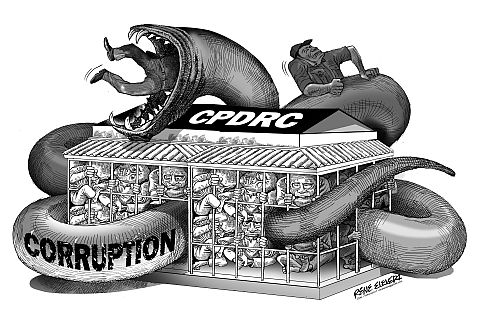
The complaint filed against Assistant Jail Warden Audisti Miguel of the Cebu Provincial Detention and Rehabilitation Center (CPDRC) came amid Cebu Gov. Hilario Davide III’s decision to withdraw the P10,000 allowances for jail guards early this month.
In deciding to withdraw the incentives, Governor Davide said he was unsatisfied with the performance of the guards after a recent Operation Greyhound inside the jail uncovered illegal drugs and gambling sheets from the inmates.
This doesn’t include whatever payoffs the jail guards and even their supervisors may or may have not received from drug-dealing inmates like Alvaro “Barok” Alvaro, who allegedly continues to engage in the illegal drug trade through cell phones he somehow manages to acquire despite supposedly strict security.
Given that background, there is some cause to suspect the validity of the complaint of the jail guards and personnel against Miguel, whom they accused of brandishing a gun and threatening them when they didn’t open the gates for him last July 15 and 17.
A background check on Miguel will likely be included in the investigation by the Capitol’s Committee on Discipline and Investigation (Codi) into the incident along with Miguel’s disclosure that he spotted some blue guards taking some supplies intended for the prisoners.
But a distinction should be made between the alleged corruption committed by the guards and Miguel’s alleged threats of violence. Still, these reports only show the disarray and challenges in running not only the CPDRC but jails across the country.
Perhaps the only solution to eliminating corruption not only in jails but in agencies like the Bureau of Customs (BoC), which is under investigation by Congress, is to have them fully automated — that is, having robots as jail guards or a functionally automated jail facility to man and keep watch over these inmates.
While that idea is preposterous given, for starters, the country’s economy and budget constraints by local government units (LGUs) — they cannot even build enough school buildings, let alone secure and fortified jail facilities — automation is an attractive albeit expensive and techologically sophisticated option that’s far out of reach of the national government, let alone an LGU.
And automation isn’t exactly a foolproof solution as evidenced by the current imbroglio at the Commission on Elections (Comelec) whose chairman is accused of receiving bribes from Smartmatic, thus effectively casting the 2016 automated elections in doubt.
But we digress. For now, the provincial government, like any other LGU in the country, will have to constantly deal with the instituted culture of corruption and violence prevalent in their jails, which is but a reflection of the corruption and violence prevalent within the corridors of power in government bureaucracy.